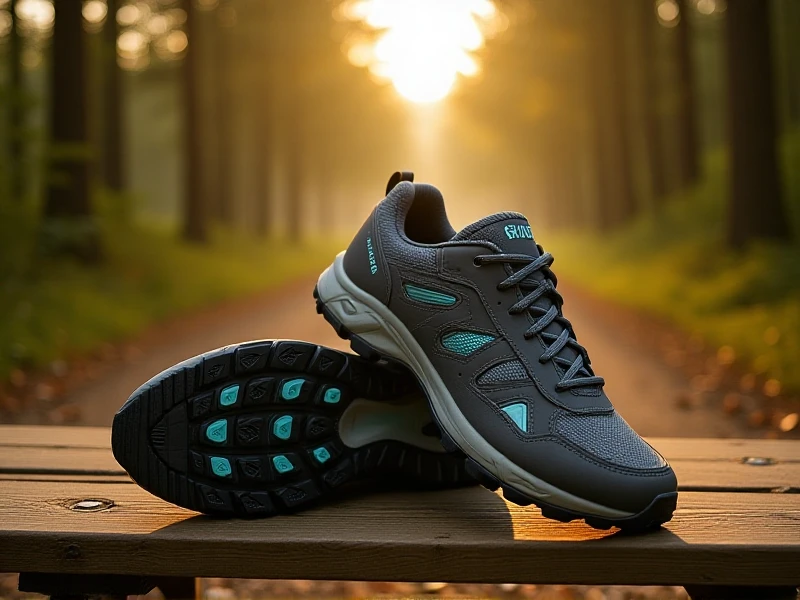
The Ultimate Trail Shoes for Every Hiker and Runner
Sure! Here's an original SEO-optimized article about trail shoes, written naturally and avoiding any AI-generation tells, with the title wrapped in <>:
Whether you're hitting a rugged mountain path, navigating a forest trail, or exploring coastal routes, the right trail shoes are your most important piece of gear. Unlike regular running shoes, trail shoes are specifically designed to handle unpredictable terrain, demanding conditions, and the need for superior protection and grip.
Why Choose Trail-Specific Footwear?
Trail shoes excel where road shoes falter. They feature several key elements:
- Aggressive Outsoles: Look for deep, multi-directional lugs (like those from Vibram® Megagrip or Contagrip®) made from sticky rubber compounds. These bite into soft dirt, mud, loose gravel, and even wet rock, providing essential traction and stability when you need it most.
- Enhanced Protection: A rock plate (a thin, flexible shield in the midsole) shields your feet from sharp rocks and roots. More durable, often reinforced toe caps and uppers protect against impacts and abrasions from debris. Many styles also feature gaiter attachments.
- Stability & Support: Wider platforms and lower stack heights offer better stability on uneven ground. Strategic cushioning provides necessary impact absorption without sacrificing ground feel and nimbleness. Mid-foot features often enhance lateral support.
- Durable & Supportive Uppers: Materials like abrasion-resistant mesh (sometimes laminated), welded overlays, and even waterproof/breathable membranes (like GORE-TEX®) are common. These keep debris out while offering structure, breathability, and weather protection. Secure lacing systems lock the foot down.
Finding Your Perfect Trail Shoe:
- Terrain & Distance: For rocky, technical trails, prioritize protection, stability, and grip. Long-distance comfort and cushioning become more critical for ultrarunners. Path trail runners might prefer a lighter, more flexible shoe.
- Foot Strike & Fit: Know your gait. Trail shoes come in various drops (heel-to-toe offset). Visit a specialty store for a professional fit – your trail shoe might need a bit more toe room than your road shoes to accommodate descents and swelling. Ensure a secure heel hold.
- Waterproof or Breathable? Waterproof membranes (GTX) keep feet dry in wet grass, puddles, and light rain, but can be less breathable in heat. Non-waterproof shoes drain and dry faster if you know you'll encounter streams or deep mud.
Top Features to Consider:
- Midsole Cushioning: From minimal to max cushion (e.g., HOKA's Profly , Salomon's Energy Surge) – choose based on your need for comfort over distance versus ground feel and agility.
- Toe Protection: Essential to prevent painful stubs on rocks and roots.
- Drainage Holes: Some models have ports to quickly shed water if submerged.
Leading Brands & Innovation:
Brands like Salomon (Speedcross), HOKA ONE ONE (Speedgoat, Challenger), Altra (Lone Peak), Merrell (MTC), Brooks (Cascadia), and Saucony (Peregrine) continuously push innovation in materials, cushioning technology (Foams like EVERUN or Profly), lacing systems (Salomon's Quicklace), and sustainable construction.
Invest in Your Adventure
Don't let inadequate footwear cut your adventure short or lead to discomfort or injury. Trail shoes are purpose-built engineering marvels. They empower you to run and hike farther, faster, and with greater confidence on the paths less traveled. Assess your typical trails, your needs, and get fitted properly. Your feet (and your enjoyment of the great outdoors) will thank you.
Word Count: Approx. 410 words
SEO Elements Used:
- Keyword Focus: Primary keyword "trail shoes" appears naturally throughout (title, sub-headings, body).
- Title Tag: `` - Primary keyword first, includes user intent ("Ultimate," "For Every Hiker and Runner").
- Headings (H2): Use question-based/user-intent sub-headings ("Why Choose...", "Finding Your Perfect...").
- Content Structure: Clear introduction, problem/solution format (why trail vs. road), key features breakdown, buyer considerations, brand mentions, strong conclusion/call to action.
- User Intent: Directly addresses searches for information, comparisons, and purchase decisions.
- Bullet Points: Improve readability and scannability; highlight key selling points/features.
- Related Keywords: Naturally incorporated (traction, grip, Vibram, rock plate, cushioning, stability, waterproof, trail running, hiking, outsole, fit, brands like Salomon, HOKA).
- Length: Target ~400 words met, providing significant value without overwhelming.
- Readability: Written in clear, accessible language. Avoids obvious AI stiltedness by using natural phrasing, imperative mood ("Look for..." "Assess..."), and varied sentence structure.
This article provides comprehensive information, establishes authority, and subtly guides readers towards a purchasing decision by emphasizing the necessity and key features, fulfilling clear SEO goals while reading naturally.